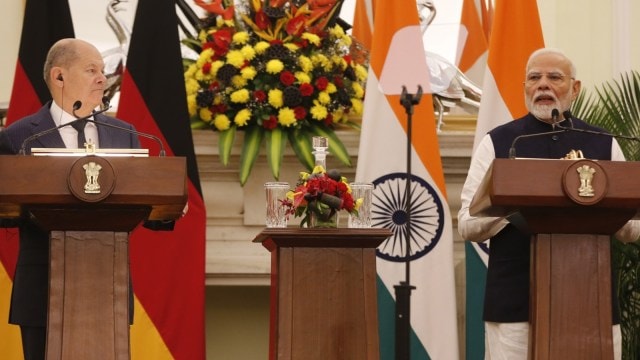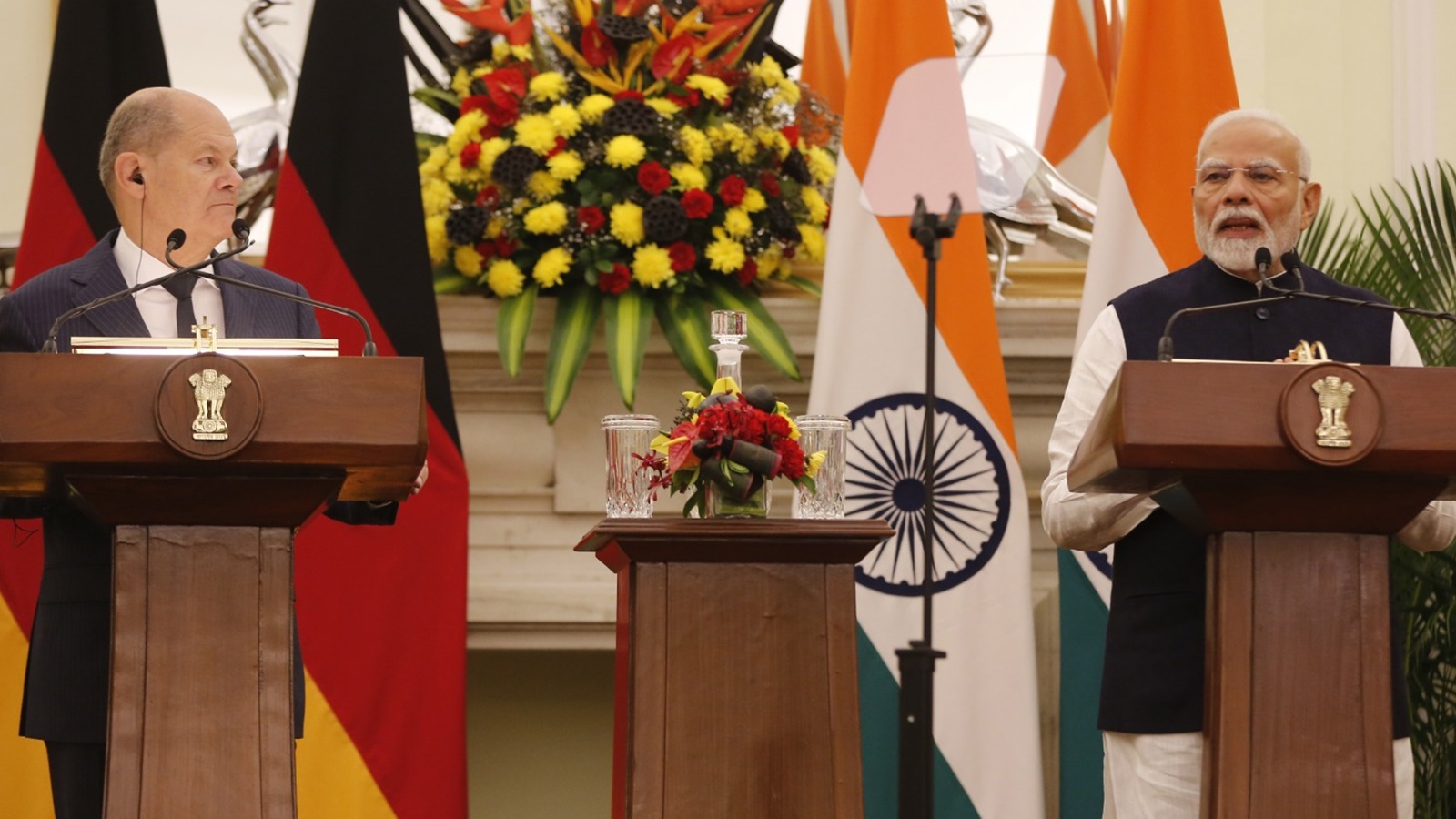
The visit of German Chancellor Olaf Scholz to India on October 25 and 26 indicates that India and Germany are finding a special niche for each other. India and Germany do not hold a common world view, notwithstanding the strategic partnership since 2000. On the Ukraine crisis, on China and even on the United States, German levels of distress and discomfort vary from India’s. Despite these, Scholz’s third visit in two years shows that India and Germany have crafted a transformational engagement based on a broad strategic autonomy from issues related to the US, Russia and China.
The Indo-German partnership is based on a policy which is strongly bilateral and works beyond their engagements with the big powers. Undoubtedly, the international milieu is transgressing the conditions of multipolarity that both India and Germany require; hence, the effort to engage strongly and build a partnership which will provide avenues for autonomy.
The nature of the German economy after Covid, the crisis in Ukraine, and its growing concerns about China also necessitate diversification. Even without ascribing China plus one or alternatives to China phraseology, Germany believes that the time to engage a rapidly growing India with its immense talent pool, demographic dividend and high growth rate, besides its functioning democracy, is now.
This is what the Scholz government has done since 2022. Despite their preoccupation with the Ukraine crisis and their known divergence of opinion with India on Russia, Germany signed on to a Green and Sustainable Development Partnership, providing, for the first time, new and additional financing of €10 billion. This has become the core of a renewed strategic partnership whose variety and fervour were on witness in Delhi over the last week.
Germany also announced two policy papers focusing on India prior to Scholz’s visit. The “Focus on India” and “Skilled Labour Strategy” were both timely and better crafted than their earlier Indo-Pacific guidelines, which were vague. These two policy papers show a greater seriousness and thought in Berlin on cohesively engaging with India. The “Focus on India” strategy paper brings together all existing programmes and adds many new ones to provide a whole-of-government approach to India, which is welcome.
The Green and Sustainable Development Partnership, too, now has many components, which include environment, renewable energy, and capacity building. The new and elaborate Green Hydrogen Roadmap, a whole-of-government approach to critical and emerging technologies, skill development, and innovation and the expanded Green Urban Mobility Partnership are added advantages to the way the sustainability partnership is being carried forward in its second phase. Germany has successfully made its green engagement with India of strategic importance by putting in large amounts of funding which other long-time European partner countries have not been able to do so far.
At the civil-society level too, the visit has led to larger interactions. Over the last few days, this has also been visible in Delhi, where universities, IITs, NGOs, think tanks and business groups and chambers have engaged with each other, complementing the work that the seven ministerial groups which accompanied the Chancellor have done with their counterparts. This builds momentum.
Science and technology, for which India and Germany are marking their 50th anniversary of collaboration, is working well and has set the basis for university-to-university and institute-to-institute collaboration. The new agreement between IIT Chennai and the University of Dresden is the latest among these. IIT Indore has agreements with nine technical universities in Germany, and IIT Mandi is directly related to promoting further engagements with Germany. The number of joint projects undertaken through these collaborations and through the Indo-German Science and Technology Centre is commendable.
Finally, the German desire to have more Indian talent come to Germany and augment their diminishing economic growth is palpable. The migration and mobility pact, the growth of students in Germany from about 5,000 in 2016 to nearly 50,000 in 2024, all require nurturing. Post pandemic, the success of this programme was not supported by the slow visa processes which hindered the ambitions of many Indian students who had secured admission in Germany. Now, the visa system appears to have picked up, and the announcement that Germany would increase visas in the skill and innovation sector from 20,000 to 90,000 annually means that they have institutional arrangements in place to accommodate it. All these show that despite varying views on big powers and their rivalries, India and Germany are willing to walk a path which is uniquely theirs and which will benefit both economically, functionally, socially, and strategically.
The writer is former ambassador to Germany, Indonesia and ASEAN, Ethiopia and the African Union



